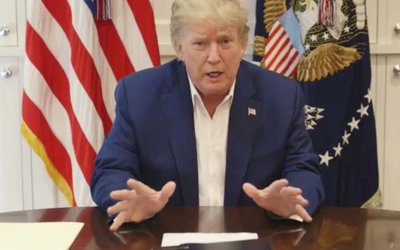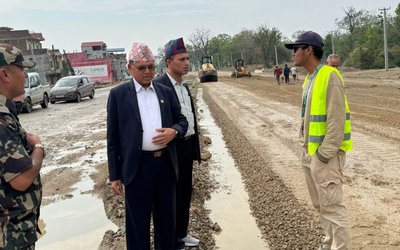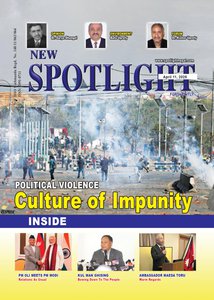The journey of Nepal’s democratic transformation has experienced notable achievements as well as moments of political instability. After the monarchy lasted for 240 years, Nepal was declared a democratic and republic country in 2008. The abolishment of monarchy paved the way for the country to build a more inclusive and representative state which contributed to the emergence of participatory governance. Participatory governance has emerged as both a constitutional mandate, and political and democratic aspirations. From the urban wards of Kathmandu to the remotest villages of Mugu, the belief that citizens must have their voices in local development planning and decision-making processes has steadily gained currency in Nepal. Indeed, Nepal’s transformation to a federal system has created a new opportunity to strengthen participatory governance by devolving authority to sub-national governments, emphasizing and encouraging inclusive local decision-making and governance.
The Constitution of Nepal (2015) strongly emphasizes participatory governance as a core principle of the state’s democratic and federal structures. It is a continuous and inclusive process where citizens engage with the government/State in developing plans, budgeting priorities, and national/local development policies. It means involving citizens not only as beneficiaries and/or recipients but also as decision-makers. In essence, participatory governance goes beyond the 'act of voting'—one of key components of representative democracy. In simple language, participatory governance is the process through which diverse stakeholders—citizens, civil society and community based organizations actively engage in local development planning, decision making, policy formulation and the management of public affairs. Ideally, participatory governance allows citizens to have a stronger say in local development priorities.
The United Nations Development Program (UNDP, 1997) defines participatory governance as a process whereby citizens, either as individuals or through organized groups, engage in influencing and sharing control over priority setting, policy-making, resource allocations, and/or program implementation. This approach emphasizes partnership between government institutions and the public, shared responsibility and inclusive dialogue to enhance accountability, transparency and most importantly local democracy and democratic legitimacy. Indeed, we have seen some progress happening in this direction such as public hearings, social audit, ward-level consultations, and participatory budgeting and planning being initiated in some of the local government bodies/municipalities. In the same vein, Tole lane organizations [Tole Sudhar Samiti], women’s club, youth clubs, community-based disaster management committees, and various user groups, among others, have increasingly obtained the opportunities to put their concerns and raise their voices in the local development issues and local-decision-making processes. These types of initiatives are appreciative and need to be promoted. However, the effectiveness of such engagements in terms of meaningful participation still highly depends on the commitment/discretion of elected officials, local government's institutional capacities, and the awareness levels of citizens themselves. Therefore, a fundamental question arises here: how meaningfully are citizens participating and involved in local development planning and decision-making processes that affect their daily lives?
We have engaged in conducting various research particularly focusing on public participation and local government bodies in which we found that the inclusive meaningful participation is first and foremost compromised and even if participation is ensured, they mostly remain to be tokenistic. This is confirmed by a large number of existing and recent literature in inclusive local governance, inclusive urban governance and participatory governance in Nepal. Elite capture, bureaucratic resistance, social-economic-cultural hierarchies and centralized mindsets of political parties are found to be four first barriers to participatory governance in the local levels. In addition to these, weak local government's institutions, lack of transparency and accountability mechanisms, lack of connectivity, geographical remoteness, low level of civic education and limited public awareness about the salience of participatory governance are other key pitfalls.
Political, social and economic elites are powerful local actors who often dominate and manipulate participatory governance. Civil servants often tend to consider themselves as 'Masters' of the public forgetting that they draw salaries from the taxes paid by the people and therefore they are called the public servants instead of 'Masters'. However, they often ignore the bottom-up voices and refuse to share decision-making roles with the public. Social, economic, and cultural [caste, gender, class and ethnic discriminations] hierarchies have been deeply rooted in the mindset of the Nepali society and so is the case of politically centralized mindsets-which—always considers that they are the king-maker and the public are the servants. In addition, local governments have very weak institutions since they have very low levels of skilled human resources, technical and financial knowledge, and adequate infrastructure to ensure meaningful engagement. Public hearings, social audits and citizen charters are poorly dealt with and citizens often feel ignored when their voices and inputs are not translated into actual outcomes. A larger section of the population still is not aware of their constitutional rights and real meaning of public participation in the local governance, and local governments are enjoying it instead of enhancing civic education. Now the question is what can be done to address the barriers/pitfalls of participatory governance in Nepal?
The answer to the question above is complex but we need to engage in addressing each of the barriers identified above. First and foremost is to combat political, social and elite captures by promoting the role of civil society for meaningful participation of the public and transparency in the allocation of the resources. Civil servants need to be comprehensively trained in order to make them understand that genuine public voices are important for sustainable local development and legitimacy of the work of local governments. Civic education and public awareness for the rights of the people and avoidance of discrimination of all the types of people including gender, caste, class, religion and disability among others. Institutional capacity strengthening through training and resources, effective and justice based policies for affirmative actions, transparent and open public hearings, social audits, and grievance redress mechanisms and citizen report cards, clearly articulated participatory governance guidelines, and digital technologies and applications are the fundamental components of participatory local governance. Unless these key issues among others are not addressed, public participation often becomes a formality, symbolic and tokenistic but not promising. Thus,participatory governance must be seen not as a burden, but as a transformative opportunity. When citizens co-create policies, they are more likely to trust the government and take ownership of development outcomes. In a country as diverse and geographically varied as Nepal, governance and development outcomes cannot be effective without local knowledge, lived experience, and community voices at the center.
Dr. Chandra Lal Pandey is an Associate Professor in the Department of Development Studies, Kathmandu University. His works in the areas of public policy, climate change, urban governance, disaster risk reduction and development. He can be reached at: chandra.pandey@ku.edu.np
Ms. Prakriti Niraula is Researcher in the Department of Development Studies, Kathmandu University. She works in the areas of urban governance, climate change and disaster. She can be reached at: prakriti.ith@gmail.com














